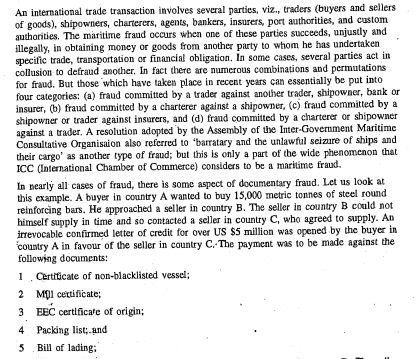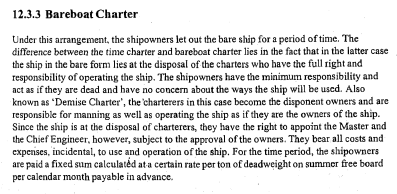Solutions to Assignments
IBO - 05 - International Marketing Logistics
Master of Commerce (M.Com) - 1st Year
Question No. 4 - Distinguish between the following:
a) Domestic logistics and International logistics
Logistic is a phenomenal practice of transporting goods to place within your country or overseas. Logistic companies are burgeoning in every alley around Australia. Whether you’re into business or have nothing to do with, understanding how logistic is important in our everyday life can help you in long run. Logistic service can be broadly defined in two ways; domestic and international. It’s easy to assume the difference between these two just by their terms, but actually it isn’t when it comes to their different functional sphere.
The Basic Line:
Domestic logistics means distributing goods within you country, while international logistic deals is the transportation of goods beyond your country line. Dealing with domestic transportation is way different than that of international because of proximity involves in the process. Let’s take a look at the basic difference of these two operations.
Management:
When searching for local freight transport service you can book in many ways. Metro transport, full truck load and dangerous goods point to point delivery to down the road or to other part in Australia can be done easily within a day or maybe in week. On the contrary, international logistics requires different set of commercial operational managers who will set an entire plan for the delivery overseas.
Costs:
The costs involved in both the process should be considered individually. The price vary based on transportation modes, technology and man power involved. There are additional taxes involved in international process that make it bit too costly than that of domestic.
Transportation:
When transporting within your country boundary, you would be able to choose many transportation options such as truck, metro and other road transportation facilities which are designed for palletized, fork-lifted and skidded. But you have very limited option when moving beyond country’s boundary.
b) Inland container depots and Container fright stations
c) Weight ton and Measurement ton.
The rates of individual commodities are expressed in different ways, namely, per weight ton (W), per measurement ton (M), and per weight ton or measurement ton (W/M), whichever gives higher revenue.
According to gross weight, i.e., weight ton, which is indicated by "W" in the tariff.
According to volume, i.e., measurement ton, which is indicated by "M" in the tariff.
The unit of measurement of different bases can vary. For example, a weight ton is usually defined as either a metric ton (100 kg) or a long ton (1,016 kg) and a measurement ton in some trades, is defined as 40 cu. feet, while in others 50 cu. feet, or else, as is usually the case today, as 1 cu. meter i.e., 35.5 cu. feet. According to normal practice, a commodity that is being charged on a weight basis will pay according to its weight irrespective of the volume it occupies and a commodity that is charged according to the volume will do so irrespective of its weight.
d) Reorder Level (ROL) and Reorder Quantity (ROQ)
The reorder level is the level of the stock of a particular item, held by the firm, when an order is needed to be placed for avoiding the risk of being out of stock. It is based on the average time taken by the supplier for replenishment, maximum usage of the item during the replenishment time, and safety stock requirement. It is also known as reorder point.
The reorder quantity is the quantity of the order that is to be placed on a new purchase order for the particular item. The ordered quantity or the number of units needs to be optimum taking into account the various factors like cost of order, cost of transportation, carrying costs, etc. The reorder quantity is the quantity which, given the normal usage, provides the best balance between the various factors like quantity discounts, freight, storage costs, and working capital requirements.
The main differences between Reorder Level and Reorder Quantity are as under:
- Reorder level is the stock level of a particular item of inventory, at which a firm needs to place an order for the fresh supply or replenishment of the item; whereas reorder quantity is the magnitude or the number of units to be ordered in a new purchase order for the fresh supply of a particular inventory item.
- While reorder level gives a signal regarding when to place a new order for the fresh supply of an inventory item; reorder quantity makes obvious the size of a particular order.
- The reorder level acts as a trigger or indication for placing the order for an item; whereas reorder quantity is the actual act of calculating and placing the size on a new purchase order.
- While in reorder level, the main element is time; in case of reorder quantity, the main element is quantity or number of units.
- While reorder level provides an answer to the question ‘when’; reorder quantity provides an answer to the question ‘how much’.
- While the internal factors involved in reorder level are maximum usage during the lead time, safety level, and replenishment period; the internal factors involved in reorder quantity are carrying cost of inventory per unit, cost of order, etc.
- Whereas the external factor involved in reorder level is lead time taken by the supplier; the external factors involved in reorder quantity are cost of freight, and big order quantity discounts.
- Reorder level has first precedence. first of all, we assess whether the stock level of an inventory item is above the reorder level or below it. if the stock level is below the reorder level, it is the trigger to place a purchase order; reorder quantity is calculated to be placed on the new purchase order, only after it has been decided that a purchase order is to be made.
- While reorder level is a strategic decision; reorder quantity is a tactical decision.
- Reorder level is a policy level or higher management level decision variable; whereas reorder quantity is an operational level and routine decision.
- While reorder level is not only an inventory management, but also business continuity issue; reorder quantity is purely an inventory management issue.
- Reorder level decision is more stable; whereas reorder quantity decision is less stable with more frequent changes.
- The main risk factor in reorder level is being out of stock; whereas the main risk factor in reorder quantity is high cost per unit of the inventory item ordered.
- The other risk factors in reorder level are disruption in production and foregone sales; whereas the other risk factors in reorder quantity are being uncompetitive in pricing of the final product or service offering, and reduction in profit margin per unit in case of higher costs of the inputs.












